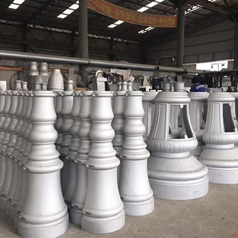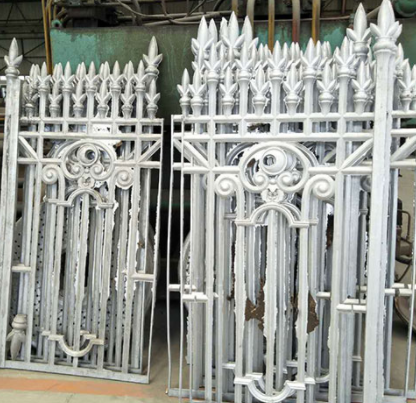Aluminum castings offer a number of advantages over other materials and manufacturing processes. Some of the main advantages of aluminum castings include:
Lightweight: Aluminum is a lightweight material, making it an ideal choice for applications where weight is a concern. This can result in lower transportation costs, easier handling, and improved fuel efficiency in transportation and aerospace applications.
Strength: Aluminum is a strong and durable material, capable of withstanding high loads and pressures. This makes it a popular choice for structural and safety critical components in the automotive, aerospace, and defense industries.
Versatility: Aluminum can be cast into a wide range of shapes and sizes, making it suitable for a variety of applications. It can also be easily machined, welded, or formed into complex shapes, giving designers and engineers greater flexibility.
Corrosion Resistance: Aluminum is highly resistant to corrosion, making it suitable for use in harsh environments and outdoor applications.
Thermal Conductivity: Aluminum has excellent thermal conductivity, allowing it to dissipate heat quickly and efficiently. This makes it a popular choice for applications where heat management is important, such as electronics and automotive components.
Cost-effectiveness: Aluminum casting is a cost-effective manufacturing process, requiring less energy and resources than other processes. This can result in lower production costs and a reduced environmental impact.
Overall, aluminum castings offer a range of benefits and can be a great choice for a variety of applications. From strength and durability to cost-effectiveness and thermal conductivity, aluminum castings offer a range of advantages that make them an attractive option for designers, engineers, and manufacturers.
Aluminum casting is a manufacturing process in which molten aluminum is poured into a mold to create a specific shape or design. Here is a brief overview of the aluminum casting process:
Pattern creation: The first step in the aluminum casting process is to create a pattern of the desired shape or design. The pattern can be made from wood, plastic, or metal.
Mold creation: A mold is created by packing sand, clay, or another material around the pattern. The mold is designed to create a cavity that will be filled with molten aluminum.
Melting and pouring: The aluminum is melted in a furnace and then poured into the mold. The temperature of the molten aluminum is typically around 700°C.
Cooling and solidification: After the aluminum has been poured into the mold, it is left to cool and solidify. The cooling time depends on the size and shape of the casting, but it can take several minutes to several hours.
Shakeout: Once the casting has cooled and solidified, the mold is broken apart to remove the casting. This is known as shakeout.
Finishing: The casting is then cleaned up and finished as required. This may involve removing any excess material, sanding or polishing the surface, and/or adding any necessary features or components.
Aluminum casting is a versatile process that can be used to create a wide variety of products, from simple shapes to complex components for aerospace, automotive, and other high-performance applications. It is commonly used in industries such as automotive, aerospace, and construction, among others.
 How To Solve The Burr Of Aluminum Castings
Jul. 29, 2024
How To Solve The Burr Of Aluminum Castings
Jul. 29, 2024
 Aluminum Casting 4 Kinds Of The Surface Treatment Pr...
Jul. 09, 2024
Aluminum Casting 4 Kinds Of The Surface Treatment Pr...
Jul. 09, 2024
Copyright © Dalian Lianjiang Metal Co., Ltd. All Rights Reserved | Sitemap
Recommend Products: Aluminum Mailbox With Post
